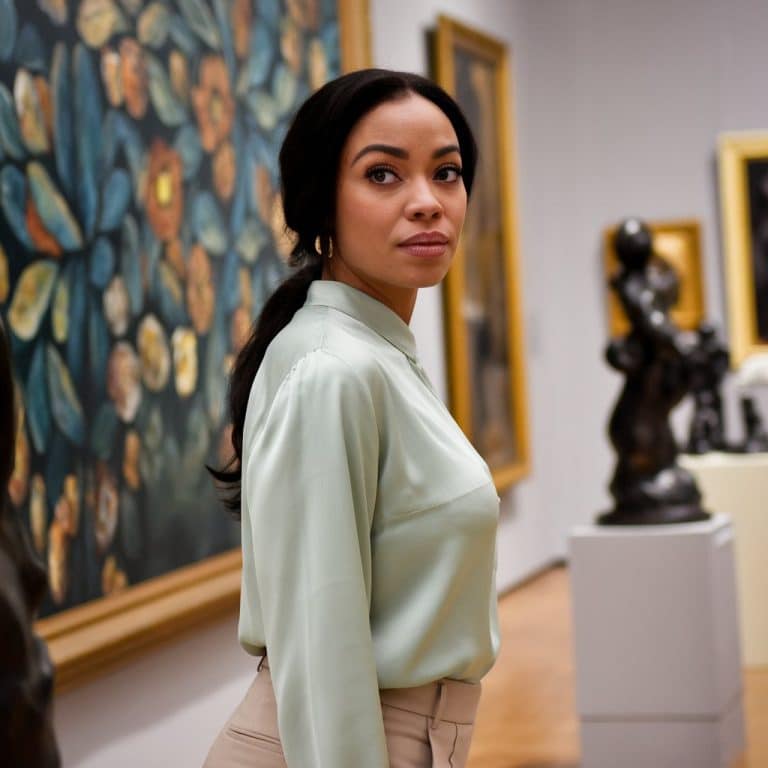Looking to give your space more personality? A vintage room aesthetic can help you do just that. It brings old-style character into your room using colors, furniture, and decor from past decades.
I’ll let you know how to create the look step-by-step. I’ll show you how to pick your style, choose colors, and add small details that make a big difference.
I will also give you ideas for different types of vintage rooms and what to avoid.
If you’re ready to style your room in a way that feels personal, warm, and full of interest, you’re in the right place. Let’s make your space reflect your style, without making it complicated.
What is the Vintage Room Aesthetic?
A vintage room aesthetic means your space looks like it came from the past, using real pieces or styles from around the 1920s to the 1990s. It’s not just about old things; it’s about making your room feel like it belongs to that time.
Here’s how the terms compare:
- Vintage: Real pieces or styles from 20–100 years ago.
- Retro: New stuff made to look like it’s from the past.
- Antique: Over 100 years old; more classic and rare.
Each decade had its own room style. The 1920s were fancy with gold details and velvet. The 1950s were bright and fun with pastel kitchens and checkered floors.
In the 1970s, rooms had earthy colors, wood walls, and bold shapes. The 1990s brought casual style with beanbags, posters, and loud prints.
Key Design Elements That Define Vintage Style
Vintage rooms have a special look, and it’s all in the details. Furniturepieces often feature curved headboards, clawfoot tables, or spindle legs, giving the room an old-fashioned feel.
Fabrics like lace, velvet, and toile add softness and texture, whether on pillows, curtains, or bedding.
The color palette usually includes muted shades such as dusty pink, sage green, mustard yellow, and warm browns. These colors bring a calm, cozy feeling. Patterns like florals, damask, and stripes are often used in wallpaper, blankets, or upholstery.
Finally, hardware matters too; look for brass knobs, iron frames, and carved wooden details. Together, these elements help create a space that feels classic, warm, and full of character.
How to Style a Vintage Room
To style a vintage room, first pick your time period. Each decade has its own feel, like the bold patterns of the 60s, the soft look of the 40s, or the edgy vibe of the 90s. This helps guide every choice you make.
Next, choose a color palette that fits that time. Soft pastels work for the 50s, warm browns and oranges for the 70s, and darker tones like black and red for the 90s.
Start with key furniture like a bed, dresser, or vanity. Look for shapes and materials that match your chosen era: curved wood, chrome legs, or velvet fabric.
Then, add wall art and textiles. Posters, framed photos, patterned curtains, or vintage bedspreads add texture and character.
Last, layer in lighting and small items like lamps, mirrors, and clocks. These little pieces help your room feel complete and true to the style you’re going for.
Vintage Aesthetic Room Ideas
Vintage styles can look and feel very different depending on the vibe you choose. Some rooms feel soft and dreamy, others bold and fun. Some lean into an antique vibe, while others mix old with new.
Here are a few vintage room ideas to help guide your look:
1. Soft & Romantic Vintage Rooms
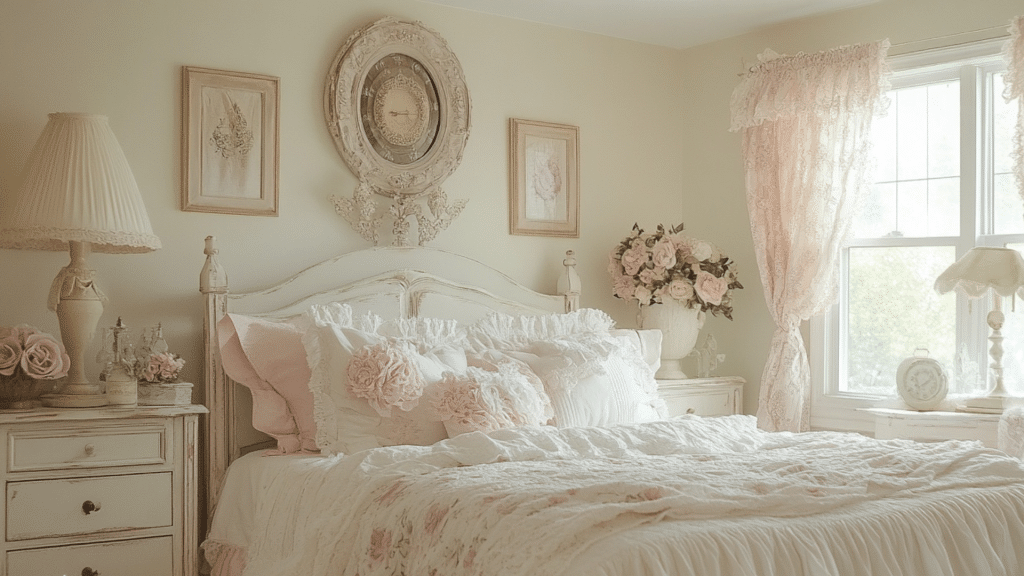
Use light colors like cream, blush, and pale blue. Add floral curtains, lace pillows, and vintage lamps with warm light. Think ruffled bedding, soft textures, and curved furniture.
This style works great if you want a calm and gentle space that feels cozy and warm.
2. Bold & Retro-Inspired Rooms
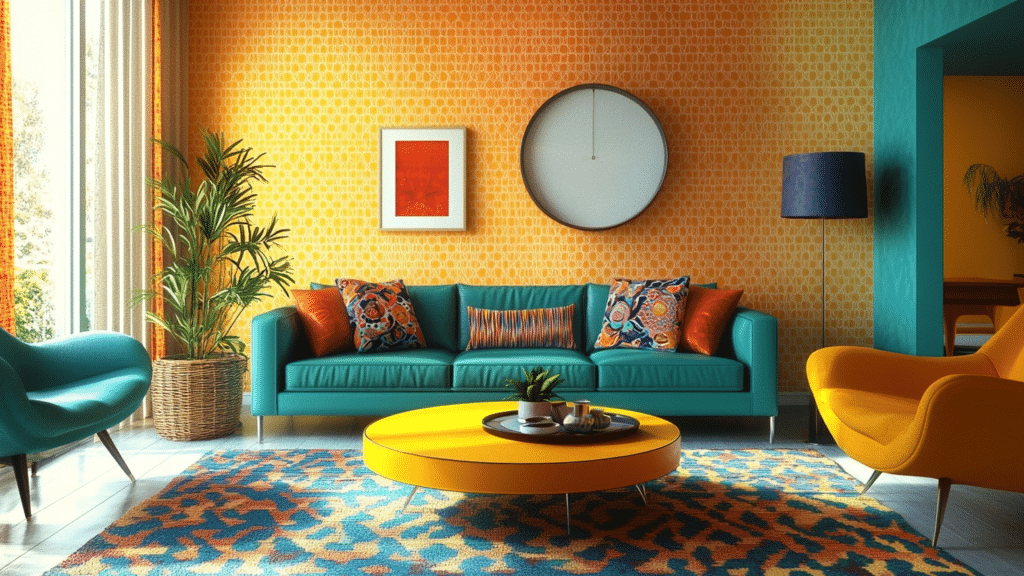
Go for bright 70s colors like orange, mustard yellow, and teal. Use geometric wallpaper, funky rugs, and bold prints. Add statement lamps or plastic chairs with curved lines.
This style is playful and loud, great for people who like fun, eye-catching spaces.
3. Rustic & Antique-Filled Spaces
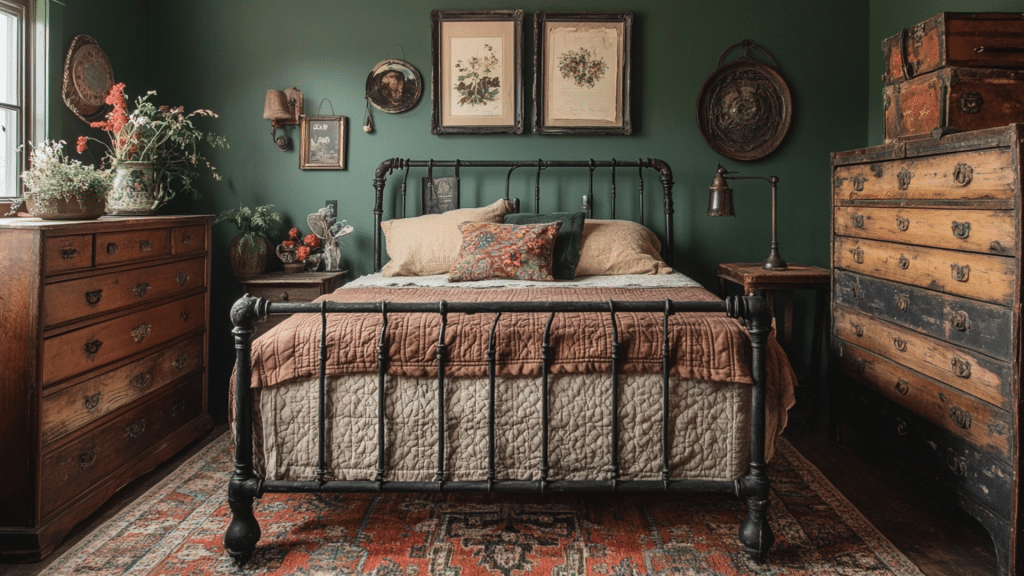
Use old wood furniture with chipped paint or metal frames. Wrought iron beds, brass handles, and oil lamps fit this look. Stick with darker colors like olive green, tan, and rust. This feels old-fashioned, simple, and full of character.
4. Vintage Dorm or Small Room Setups
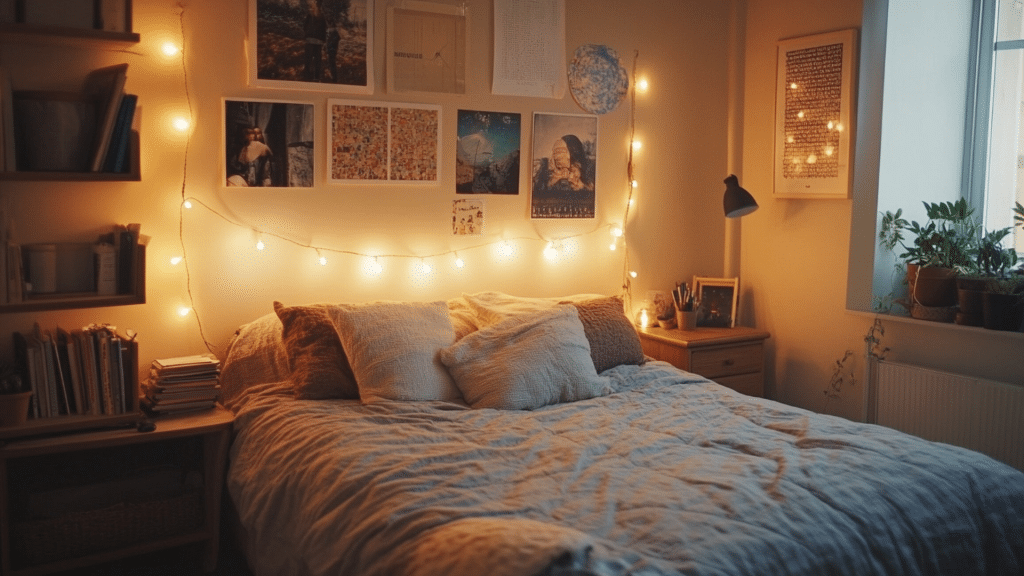
Focus on saving space with smart choices. Use a mix of vintage posters, string lights, and collage kits to decorate the walls. Go for cozy bedding and a small thrifted nightstand. Add storage under the bed to keep things tidy and still stylish.
5. Vintage with Modern
Mix old pieces with simple, clean ones. Pair a sleek desk with a vintage chair or a plain bed with an old wooden chest. Use neutral colors as your base and add just a few older accents. This style gives you the best of both worlds – fresh and classic.
Pick Your Vintage Style, Colors, and Details
Choosing your vintage style starts with picking a decade you connect with. Each one has its own feel, like the soft tones of the 1940s or the bold patterns of the 1970s.
Once you know your era, picking colors gets easier. Go with shades that match the time – pastels for the 50s, earth tones for the 70s, or darker shades for a 90s vibe.
Next, focus on small details. Look for furniture with the right shapes, like curved wood or thin metal legs. Add fabrics like lace, velvet, or cotton for texture.
Even simple things like a lamp, mirror, or pillow can pull the look together. These little choices help your room feel real, warm, and full of character.
What to Avoid When Creating a Vintage Look
Creating a vintage room is all about balance. It’s easy to go overboard or mix things that don’t work well together. Here are a few things to watch out for when planning your space:
- Don’t overcrowd the room: Too many vintage items can make the space feel messy or cramped.
- Avoid mixing too many periods: Stick to one or two decades to keep the look clear and focused.
- Skip plastic or overly modern materials: They clash with vintage textures like wood, metal, and fabric.
- Don’t forget comfort: Vintage doesn’t have to mean stiff; make sure the room still feels cozy.
- Avoid fake “old” items that look cheap: Thrifted or well-made pieces feel more real and add better style.
- Don’t ignore lighting: Harsh or cold lights can ruin the warm feel vintage rooms are known for.
Staying mindful of these small details can help your room feel put together and true to the vintage style you’re going for. Less is often more when it comes to creating a space that feels calm, clear, and easy to enjoy.
Conclusion
I’ve found that the vintage room aesthetic is all about making a space feel warm, personal, and full of character. Now you know how to choose your style, pick colors that fit, and add details that bring your favorite era to life.
Even small changes, like swapping a lamp or adding vintage textiles, can completely shift the feel of a room. Keep comfort front and center, and avoid overcrowding so the space stays inviting.
Start with one or two key pieces, then build gradually until it feels just right.
For more simple, practical ways to style your home, check out my other blogs and get inspired to make every space truly yours.

